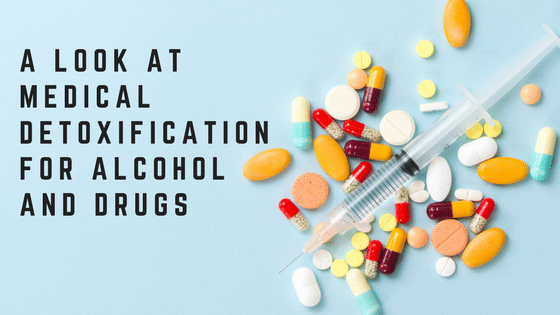Find top-rated alcohol detox centers near Chester NJ for effective recovery.
Find top-rated alcohol detox centers near Chester NJ for effective recovery.
Blog Article
The Role of Alcohol Detoxification in Taking Care Of Withdrawal Signs Successfully
Navigating the troubled journey to sobriety can be complicated, with alcohol withdrawal signs positioning a significant difficulty. The duty of alcohol detoxification in this procedure is important, providing a medically monitored setting for safe alcohol elimination and signs and symptom administration.
Understanding Alcohol Withdrawal: Symptoms and Duration
What occurs when a persistent drinker unexpectedly quits consuming alcohol? The body, long accustomed to the depressant results of alcohol, experiences a rebound impact known as withdrawal. Signs and symptoms can differ from light to severe, generally showing up within 8 hours of the last drink, peaking by 24 to 72 hours, and perhaps lasting weeks.
Initially, individuals may struggle with stress and anxiety, restlessness, and insomnia. Physical symptoms such as sweating, rapid heart rate, and hand tremors may additionally occur. As the withdrawal progresses, symptoms can escalate to serious confusion, hallucinations, fever, and seizures, a problem called ecstasy tremens.

The Principle of Alcohol Detoxification: A Brief Overview
The principle of alcohol detoxification is a crucial component of the healing trip for those dealing with alcohol dependency. The process, while facility, is critical in removing the body of alcohol and its hazardous effects. As we continue, the importance of this detoxification process in regard to taking care of withdrawal signs will be thoroughly talked about.
While several view alcohol detoxing as a basic process, it is actually a complex physiological operation that the body goes through to free itself of damaging alcohol-related toxic substances. Alcohol cleansing, therefore, becomes an important action in the recuperation journey. It includes the cautious administration of withdrawal signs that appear as the body changes to the lack of alcohol.
In the realm of addiction recuperation, the importance of the alcohol detoxification procedure commonly continues to be underappreciated. It makes up the preliminary action in alcohol dependency treatment, concentrating on getting rid of the dangerous substance from the body. When done correctly and under clinical guidance, it can reduce the seriousness of withdrawal signs and symptoms, minimizing the risk of complications.
How Alcohol Detoxification Helps in Handling Withdrawal Signs And Symptoms
Alcohol cleansing plays a critical function in taking care of withdrawal signs. It involves the secure elimination of alcohol from the body, thereby lowering the physical and emotional impacts of withdrawal. This procedure aids in producing a steady foundation for succeeding recuperation initiatives.
Regardless of its prospective dangers, detoxification from alcohol can dramatically assist handle and alleviate additional reading withdrawal signs and symptoms. The body, accustomed to the presence of alcohol, responds negatively when it is suddenly robbed, leading to withdrawal symptoms. Alcohol detox aims to lessen these symptoms and prevent potential complications.
While the procedure of detoxification can be challenging, it plays an essential function in handling withdrawal signs and symptoms connected with alcohol cessation. The purpose of detoxification is to safely manage withdrawal symptoms when a person stops drinking alcohol. This process can help to decrease the physical effects of withdrawal, such as trembling, seizures, and hallucinations, by progressively lowering alcohol consumption or making use of drug to manage signs and symptoms.

The Structure of a Reliable Alcohol Detoxification Program
To ensure a successful recovery, the structure of an effective alcohol detoxification image source program need to be meticulously developed and customized for each person. This indicates thinking about their drinking history, level of dependency, physical health and wellness, and mental state.
The process normally begins with an extensive evaluation to figure out the intensity of the addiction and any type of possible co-occurring conditions. This evaluation helps in developing one of the most ideal treatment plan.
Following, a detoxing procedure is initiated which is meant to get rid of alcohol from the body. This stage can be challenging as a result of withdrawal signs and symptoms, yet an efficient program provides essential support to take care of these signs and stop relapse.

Lastly, an effective alcohol detox program must have a strong aftercare strategy, providing ongoing support to stop relapse and guarantee long-term healing. This alternative approach is critical in guaranteeing the success of the detoxification program.
The Function of Medical Guidance in Alcohol Detox
Given the prospective severity of withdrawal signs, medical guidance plays a crucial duty in alcohol detox (Alcohol withdrawal treatment). This procedure commonly entails unpleasant, and occasionally life-threatening, signs and symptoms such as shakes, hallucinations, and seizures. Medical personnel are equipped to manage these signs and symptoms, making use of medicine to alleviate discomfort and monitoring essential indicators to ensure security
Along with physical health and wellness, clinical supervision additionally you could check here gives emotional assistance. The procedure of detox can be mentally draining pipes, fostering feelings of concern, anxiousness, and anxiety. Trained experts can offer essential psychological assistance, assisting people handle these feelings effectively.
Lastly, clinical supervision aids to manage the threat of difficulties. Withdrawal can lead to serious wellness complications, including dehydration and heart issues. Physician can identify these threats early, giving timely and proper treatment.
Verdict
In verdict, alcohol detox is a critical first action in managing withdrawal symptoms and guiding towards long-term sobriety. Through a structured detox program and clinical guidance, the severity of withdrawal signs and symptoms can be substantially decreased, improving comfort and safety and security for the individual. The utmost goal is to guarantee a healthier, alcohol-free life, with recurring assistance essential to keep sobriety and stop relapse.
Report this page